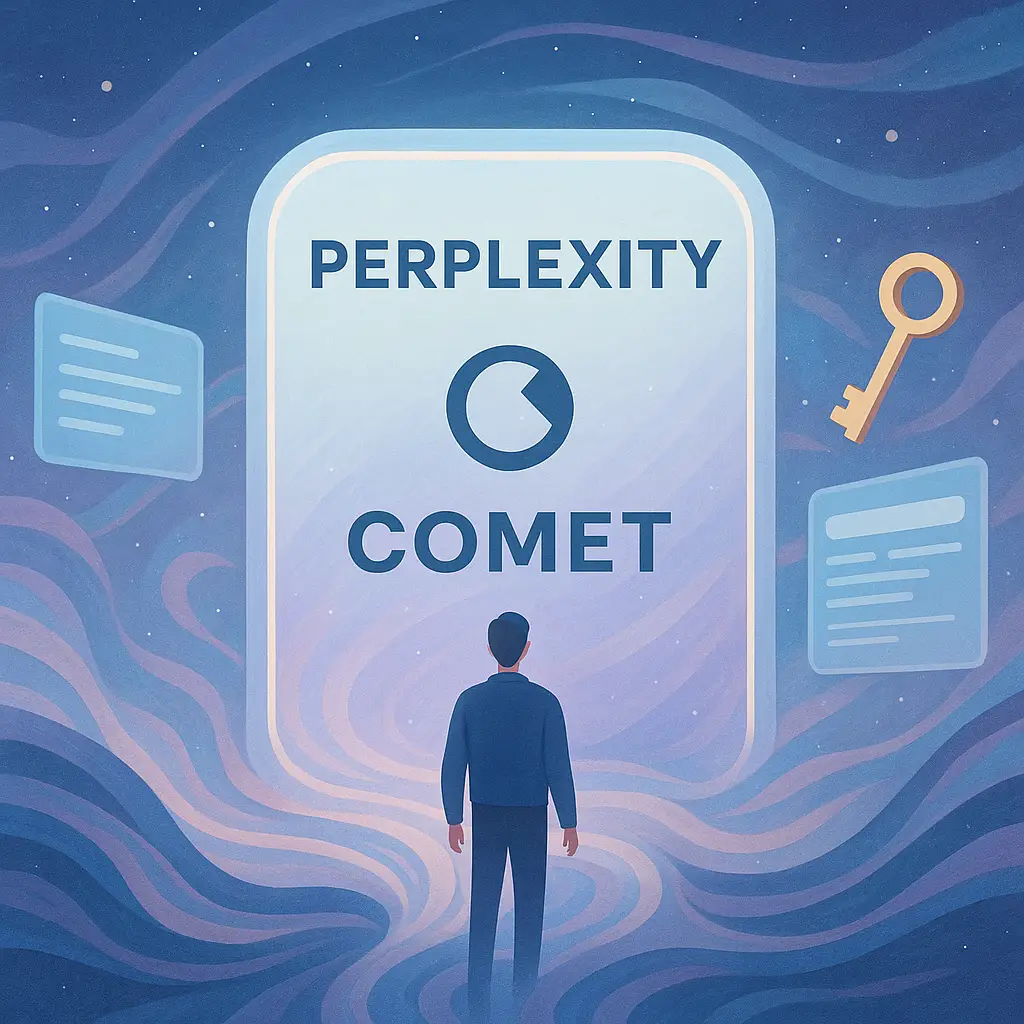
Vibe Coding Checklist: Don’t Forget
Table of Contents
- Introduction
- What Even Vibe Coding?
- Why a Checklist Matters More Than You Think
- ✅ The Essential Vibe Coding Checklist
- 🎯 1. Define What You're Actually Building
- 🛠️ 2. Choose Tools with Training Wheels
- ✍️ 3. Master the Art of the Prompt
- 📜 4. Review the AI's Work (It's Not Magic)
- 🔒 5. Secure the App Like It's Already Popular
- 🔐 6. Authenticate the Right Way
- 🧩 7. Data Storage and Handling
- 🕵️♀️ 8. Don't Trust Your Frontend
- 🧪 9. Test the AI's Output (Even Badly!)
- 🚀 10. Don't YOLO the Deployment
- 🧠 11. Keep Learning From Every Break
- 🌐 12. Be Cautious Sharing Your App Publicly
- 👥 13. Lean on Communities
- TL;DR: Vibe, But Don't Skip the Basics
- Frequently Asked Questions (FAQs)
Introduction
Vibe coding is exciting, no doubt about it. With a few words typed in plain English, AI spits out the code. You're building something useful—fast, creatively, and without needing a CS degree or years of coding grind. It feels like magic. But—and here's the hard truth—it can be a trap.
If you're not careful, all that AI convenience comes with a price: broken apps, security holes, expensive bills, or even exposing sensitive user data. The worse part? You might not even realize the damage until it's too late.
That's why we need a checklist. Whether you're just dabbling on the weekend or soft-launching your side hustle, a simple set of reminders can save you from nightmare scenarios.
This guide is your safety net. A vibe coder's practical checklist to catch the gotchas, protect your project, and still build cool stuff... without ending up on an angry Hacker News thread.
Generate Veo 3 JSON, Fast
Create structured, optimized JSON for Veo 3 in minutes. Clear fields. Correct syntax. Consistent results.
Open Veo 3 JSON GeneratorWhat Even Is Vibe Coding?
Let's rewind for a second.
Vibe coding, a term popularized by Andrej Karpathy, refers to the process of using AI (like GPT-4, Claude, or Copilot) to build software through natural language prompts instead of traditional, manual code writing. You're essentially 'vibing' with AI - giving it instructions, watching it build features, and getting from idea to prototype rapidly.
It's ideal for:
- Quick prototypes.
- Data dashboards.
- Weekend hacks.
- Internal tools.
- Demos to show off to investors or clients.
- Personal productivity tools.
But vibe coding comes with its Achilles' heel: lack of code understanding, skipped security steps, and tech debt you can't fully see.
Which leads us to this article's main mission.
Why a Checklist Matters More Than You Think
You don't need to be a security expert or full-stack pro. But here's what vibe coding isn't: a shortcut to skip thinking. You still need to own your decisions.
A checklist helps:
- Prevent security disasters.
- Maintain code quality.
- Avoid burning money (aka, APIs gone wild).
- Reduce technical frustration later.
- Learn while building.
Now let's get into the good stuff.
✅ The Essential Vibe Coding Checklist
This is your toolkit. Whether you're building a SaaS MVP, automating a spreadsheet, or playing with LLMs for fun—these are the questions to ask and boxes to check before you hit "deploy."
Use this table as your high-level cheat sheet. We'll break it all down section-by-section just after.
| Category | Checklist Highlights |
|---|---|
| Project Clarity | Define scope, goals & risk tolerance |
| Tool Selection | Use reputable AI + dev tools |
| Prompt Strategy | Be clear, iterative, security-aware |
| Code Review | Review outputs critically, even if fast |
| Security Setup | Protect API keys, add auth, sanitize inputs |
| Auth Management | Use bcrypt, JWTs, session timeouts |
| Data Handling | Backups, encryption, unique DB rules |
| Frontend Safety | Avoid secrets, secure inputs, debounce UX |
| Testing Process | Unit tests, edge cases, AI test generation |
| Deployment | Health checks, CI, monitoring & logs |
| Learning Loop | Track changes, analyze what broke |
| Public Sharing | Think twice before showing source URLs |
| Community Input | Share with dev peers, ask for feedback |
Ready to unpack them? Let's go.
🎯 1. Define What You're Actually Building
Before a single line of code is AI-generated, ask:
- What is the app's purpose?
- Who is using it? Only you? Or customers?
- What's the blast radius if it fails?
If it's a throwaway side project for automating your calendar, cool. Just vibe. But if it involves real user data, payments, or builds a mailing list—you need to be realistic about the stakes and add guardrails.
Don't skip this step.
🛠️ 2. Choose Tools with Training Wheels
All vibe coding tools aren't equal. Some AI environments give you freedom but leave you exposed. Others sandbox your code and make stupid mistakes harder.
Here are your best bets:
| Tool | Why Use It |
|---|---|
| GitHub Copilot | Great for in-IDE autocomplete; solid for experienced devs |
| Cursor | Full AI dev environment; enables multi-prompt workflows |
| Claude Artifacts | Safe, no outbound network by default; beginner-friendly |
| Replit + Ghostwriter | Community-driven sandbox; great for quick tests |
| Supabase | For building real-time, hosted backends with AI support |
Tip: Choose environments that prevent outbound HTTP requests and limit direct DB access unless explicitly enabled. That one step alone avoids 90% of early-stage security incidents.
✍️ 3. Master the Art of the Prompt
Garbage in, garbage out. That's more true in AI coding than anywhere else.
To draw out useful, safe code:
- Be Specific: Don't say "build a login system." Say "create a secure login form with email verification, bcrypt hashing, and rate limiting."
- List Requirements Clearly: e.g., "Use Express.js, rate-limit IPs, restrict access to
/dashboardif user isn't logged in, log failed attempts." - Think Like an Engineer, Not a User: Detail logic, error-handling, and inputs/outputs.
- Iterate Prompt-by-Prompt: Refine. Re-run. Evolve.
This is where vibe coding becomes a skill. It's not mindless copy-paste. It's prompt architecture.
📜 4. Review the AI's Work (It's Not Magic)
Just because the code runs doesn't mean it works correctly or safely. You must look under the hood.
What to check:
- Does it expose logic to the frontend that shouldn't be visible?
- Are there raw API keys or secret tokens?
- Is error handling missing?
- If there's a SQL call: does it sanitize inputs?
- Are passwords stored in plain text?
Red flag: If you're copying AI code into production without reading it, you're flying blind.
🔒 5. Secure the App Like It's Already Popular
It's easy to assume, "eh, no one will see this." That's when things go wrong.
Top security tasks:
| Item | Checklist |
|---|---|
| API Keys | Use .env files, never expose |
| HTTPS | Encrypt all traffic |
| CORS | Lock access to specific domains |
| Rate Limits | Prevent brute-force or scraping |
| Input Validation | Never trust user input |
| SQL Injection | Use parameterized queries |
| Secrets in Git | Use .gitignore, scan history |
Still unsure? Tools like GitGuardian or dotenv-vault help detect secret leaks.
🔐 6. Authenticate the Right Way
AI may generate login systems that... kinda work. But vibe coders often skip subtle but vital auth details.
Fix that with three reminders:
- Use Bcrypt or Argon2: Never unhashed passwords.
- Use JWTs or Tokens: And expire them.
- Build "Forgot Password" Flows: With email + token validation.
Here's a mini table with suggested auth defaults:
| Feature | Essential Practice |
|---|---|
| Password Reset | Token + expiry, no full reset links in front |
| Session Timeout | Signed JWTs with short duration OR cookie-based auth |
| Signup Validations | Email verification, password strength rules |
| Brute-Force Prevention | IP throttling, user lockout policies |
🧩 7. Data Storage and Handling
You don't want to wake up to overwritten tables or 100k junk rows.
Practical tips:
- Add Database Column Constraints: Enforce unique rows, non-null values.
- Encrypt Sensitive Data: Especially banking info, emails, PII.
- Set Up Backups on Day 1: Services like Supabase make this easy.
- Have a Rollback Plan: If <X> breaks, how do I revert?
Example from Leo's flat-out vibes-gone-wrong: Users bypassed Stripe paywalls because checks weren't enforced server-side.
Easy fix: validate subscription server-side for every API call.
🕵️♀️ 8. Don't Trust Your Frontend
Frontend security's like a bouncer that's always asleep. Everything there can be seen, modified, spoofed.
Here's how to plug the obvious holes:
- Never put API keys, tokens, secrets in frontend code
- Use lazy loading for heavy third-party JavaScript
- Debounce form submissions to avoid duplicates
- Sanitize user input using DOMPurify or similar
- Avoid overly verbose errors users can exploit
🧪 9. Test the AI's Output (Even Badly!)
Got one test? It's already better than 99% of vibe-coded apps.
Try this:
- Ask GPT to generate unit tests for each endpoint or function.
- Redirect edge cases to dummy endpoints and validate failures.
- Do basic penetration testing with tools like OWASP ZAP or Postman Fuzzing.
Testing adds 30-60 minutes extra. But it'll save you the hours spent debugging with angry users pinging, "It's broken again!!"
🚀 10. Don't YOLO the Deployment
Yes, deploying is fun. Your app is live! But:
| Checklist | |
|---|---|
| CI/CD | Use GitHub Actions, Railway or Vercel's pipelines |
| Health Checks | Build a /status route to ping |
| Logging | Track 500s, timeouts, authentication failures |
| Rollbacks | Keep old deployments handy in case of disasters |
| Monitoring | Use Sentry, Logtail or PostHog to track UI & errors |
Even for solo projects, these aren't overkill—they're early habits.
🧠 11. Keep Learning From Every Break
Something will go wrong. That's the deal.
So when your app borks or explodes:
- Keep a changelog
- Document the problem, the cause, and your fix
- Iterate your prompt strategy
Failure as feedback: that's vibe coding in its truest form.
🌐 12. Be Cautious Sharing Your App Publicly
We love to show off. But bad actors watch X, Reddit, and HN for code snippets, API URLs, and unguarded demos.
Protection tips:
- Obscure internal dashboards
- Use basic auth on dev deployments
- Redact API endpoints in screenshots
- Share backend repos only in private
Sometimes, sharing can feel like welcoming the wolves. Just be a little paranoid. It's okay.
👥 13. Lean on Communities
When in doubt, ask. The vibe coding community is growing fast, and discussions on:
- Hacker News
- X (formerly Twitter)
- Dev.to and Medium
- [Discords like Supabase or Replit]
...can offer fast advice, sample prompts, templates, and war stories.
TL;DR: Vibe, But Don't Skip the Basics
Vibe coding unlocks amazing tech access for creators, entrepreneurs, and hobbyists. But it's not permission to skip thinking.
In a world where someone hacked a vibe-coded SaaS because the dev forgot to rate-limit API calls... you need this checklist.
You don't need to code like a senior engineer. But you need to think like one.
Still vibing? Good. Just do it with your eyes open.
Happy building.
Frequently Asked Questions
Share this article
Related Articles

Comet Invite: 1-Month Free Perplexity Pro
Discover how to secure a guaranteed invite to Comet with free 1-month access to Perplexity Pro without a waitlist or credit card. Your comprehensive guide to the next generation in AI-powered browsing.

Earn Money with Comet India: 12 Tips
Discover effective strategies to earn money using Comet in India. This guide covers 12 hidden automation techniques, real-user tactics, and essential insights for pro users.

Veo 3: Complete AI Video Guide (2025)
Explore a comprehensive guide to using Veo 3 for AI video generation, examining practical steps, pricing plans, and creative tips for high-quality, affordable video production.
